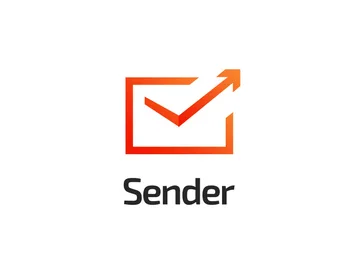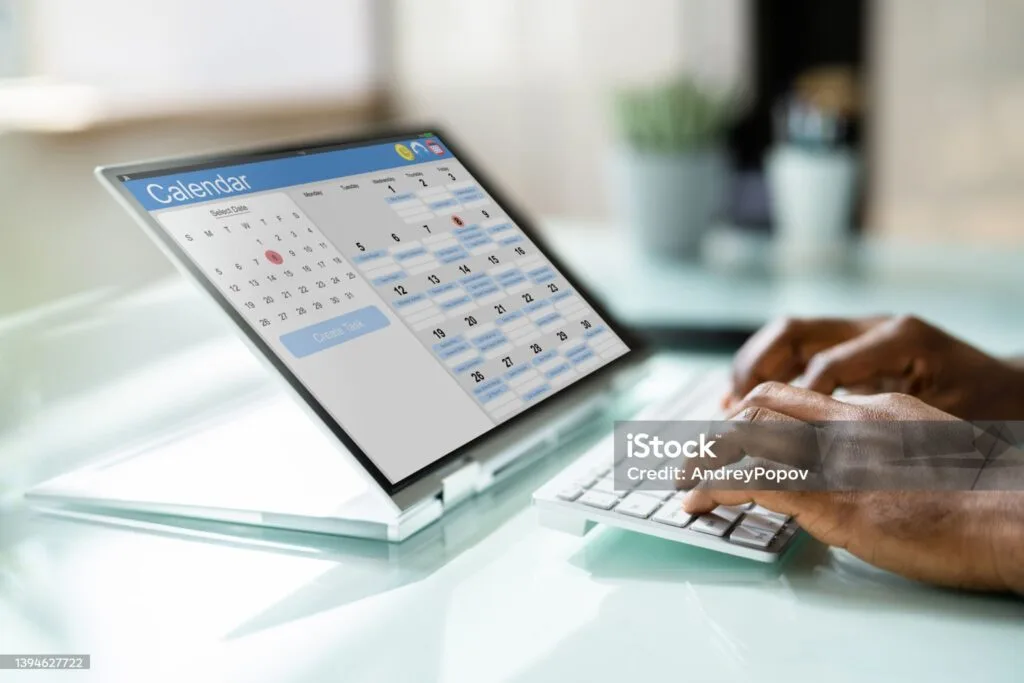In the fast-paced world of digital marketing, email remains a cornerstone, connecting businesses with customers in a personal and impactful way. But in the sea of email marketing tools, finding the one that resonates with your business ethos, matches your marketing aspirations, and fits snugly into your budget can be a daunting task. Today, we’re placing two notable contenders side by side: Sender and SalesHandy. Each brings its unique strengths to the table, from intuitive design and automation capabilities to advanced analytics and integration options. Whether you’re a small business owner embarking on your first email campaign or a seasoned marketer looking to fine-tune your strategy, this comparison aims to illuminate the path to choosing the right tool for your email marketing needs. Let’s dive into the crucial aspect of Ease of Use and User Interface, a factor that can significantly influence your daily operations and overall marketing efficiency.
| Sender | SalesHandy |
|---|---|
 |  |
| G2 Score – 4.4 out of 5 stars | G2 Score – 4.6 out of 5 stars |
| TrustRadius Score – 5.2 out of 10 | TrustRadius Score – 9.0 out of 10 |
Ease of Use and User Interface
The usability of an email marketing tool is paramount. A platform that’s intuitive not only saves time but also empowers you to focus on crafting messages that resonate with your audience, rather than grappling with complex interfaces. Here’s how Sender and SalesHandy stack up in terms of user-friendliness and design.
Sender: A Model of Intuitive Design
Sender is renowned for its straightforward, user-centric interface. Designed with clarity in mind, it welcomes marketers of all skill levels, enabling them to navigate its features with ease. From setting up campaigns to managing subscriber lists, every aspect of the platform is streamlined for efficiency. The drag-and-drop email builder is a highlight, allowing users to create visually appealing emails without needing a background in design. This simplicity extends to its automation workflows, which guide you through setting up sophisticated email sequences with a few clicks. For businesses seeking a tool that combines ease of use with powerful functionality, Sender stands out as a compelling choice.
SalesHandy: Streamlining Email Outreach
SalesHandy takes a slightly different approach, focusing on streamlining email outreach, particularly for sales teams. While its interface is designed to be intuitive, it gears more towards users looking for specific functionalities such as email tracking, scheduling, and auto follow-ups. The platform excels in providing detailed insights into email performance, offering a straightforward dashboard that highlights open rates, click rates, and engagement metrics. SalesHandy’s emphasis on sales-oriented features makes it an attractive option for businesses looking to closely monitor and enhance their email outreach efforts.
The Verdict on Ease of Use and User Interface
When it comes to ease of use and the user interface, your choice between Sender and SalesHandy will largely hinge on your primary use case and preference for simplicity versus specialized functionality. Sender offers an all-around user-friendly experience, ideal for those who value an intuitive design and a broad set of email marketing features. On the other hand, SalesHandy caters to users with a clear focus on sales efficiency, providing tools that enhance email outreach and performance tracking.
| Sender | Free Plan: Up to 2,500 subscribers and 15,000 emails per month. Includes basic features like newsletters and subscription forms. Standard Plan: Starting at $11/month for up to 5,000 subscribers and 60,000 emails. Includes advanced features like autoresponders and transactional emails. Professional Plan: Custom pricing based on higher volumes of subscribers and emails, including additional features like dedicated IP and webhooks. |
| SalesHandy | Free Plan: Basic features including email tracking and scheduling. Regular Plan: Priced at $9 per user per month, offering unlimited email tracking and templates, and mail merge features. Plus Plan: At $22 per user per month, includes advanced features like team reports, team templates, and document tracking. Enterprise Plan: At $49 per user per month, adding features like dedicated account manager and custom integration. |
Pricing and Scalability
The cost of an email marketing tool and its ability to scale with your business are critical factors in your decision-making process. An ideal platform not only fits your current budget but also grows with your needs, avoiding the hassle of switching platforms down the line. Here’s how Sender and SalesHandy measure up in terms of pricing and scalability.
Sender: Cost-Effective Growth
Sender is recognized for its transparent and affordable pricing structure, appealing to small and medium-sized businesses looking for value. It offers a generous free plan, which includes access to most of its features, providing ample room for startups and small businesses to launch effective email marketing campaigns without initial investment. As your business grows, Sender’s paid plans are designed to scale with you, offering increased sending limits and access to advanced features such as enhanced automation and segmentation tools. The pricing tiers are straightforward, based on the number of subscribers, making it easy to anticipate costs as you expand your reach.
SalesHandy: Focused Pricing for Sales Teams
SalesHandy positions itself with pricing that reflects its focus on sales and outreach efficiency rather than traditional email marketing. It provides several pricing tiers that cater to different sizes of sales teams and their specific needs, from basic email tracking and scheduling to more advanced features like auto follow-up sequences and team performance reports. While SalesHandy doesn’t offer a free plan akin to Sender’s, it does provide a trial period for users to test its features. The platform’s pricing is structured around the number of users and the level of functionality required, making it suitable for businesses that prioritize sales engagement and productivity over broader marketing campaigns.
The Verdict on Pricing and Scalability
When considering pricing and scalability, the choice between Sender and SalesHandy will depend on your primary focus—broad email marketing campaigns or sales-focused email outreach.
Sender is the go-to option for businesses seeking an affordable and scalable solution for comprehensive email marketing efforts. Its user-friendly pricing model and generous free tier make it an attractive choice for startups and growing businesses aiming to enhance their marketing reach without a significant upfront investment.
SalesHandy, on the other hand, is tailored for sales teams looking for specialized tools to optimize their email outreach. Its pricing reflects the platform’s focus on sales productivity features, offering scalability based on team size and functionality needs rather than the breadth of marketing campaigns.
Automation and Integration Capabilities
The depth of automation features and the breadth of integration options can greatly influence your choice of an email marketing tool. Both Sender and SalesHandy offer capabilities in these areas, but they cater to different needs and preferences. Let’s see how they compare.
Sender: Streamlined Automation for Marketers
Sender shines when it comes to providing marketers with powerful yet accessible automation tools. The platform allows users to easily create automated email sequences that can be triggered by subscribers’ actions, such as signing up for a list or making a purchase. This capability enables businesses to set up efficient onboarding sequences, re-engagement campaigns, and more, without needing extensive technical know-how.
In terms of integrations, Sender offers a solid range of connections with popular e-commerce platforms, CRM systems, and other marketing tools. These integrations are designed to streamline the flow of data between Sender and other software used by businesses, enhancing the relevance and personalization of email campaigns. The platform’s focus on e-commerce integrations, in particular, makes it a great option for online retailers looking to automate and tailor their marketing efforts based on customer behavior and purchase history.
SalesHandy: Focused Automation for Sales Teams
SalesHandy provides a set of automation features specifically tailored for sales processes. The platform excels in automating email outreach with features like sequence automation, which allows sales teams to schedule a series of follow-up emails based on recipient actions, such as opens or replies. This targeted approach to automation helps sales professionals stay on top of leads without manual follow-up, increasing efficiency and the chances of conversion.
While SalesHandy’s primary focus is on enhancing sales productivity through automation, it also offers integrations with key email platforms like Gmail and Outlook. These integrations enable users to seamlessly incorporate SalesHandy’s tracking and automation features into their existing email setup. However, the platform’s integration options are more limited compared to broader marketing platforms, focusing mainly on email service providers rather than a wide range of marketing or CRM tools.
The Verdict on Automation and Integration Capabilities
Your decision between Sender and SalesHandy in terms of automation and integration capabilities should be based on whether your primary focus is on comprehensive email marketing or sales-oriented email outreach.
Sender is ideal for businesses seeking a versatile email marketing platform with robust automation features and broad integration capabilities, especially useful for e-commerce. Its user-friendly approach allows marketers to easily set up automated campaigns that enhance engagement and conversion.
SalesHandy, on the other hand, is tailored for sales teams looking for specialized automation tools to streamline their email outreach and follow-up processes. Its sales-focused automation and integration with major email platforms make it a powerful tool for sales professionals aiming to boost their productivity and effectiveness.

Related: Check out our free SEO suite

Reporting and Analytics
The depth and accessibility of reporting and analytics offered by an email marketing tool can significantly impact your marketing strategy’s success. Here’s how Sender and SalesHandy equip users with the insights they need.
Sender: Accessible and Actionable Insights
Sender offers a comprehensive suite of analytics and reporting tools designed to make campaign performance tracking both straightforward and insightful. Users can easily monitor key metrics such as open rates, click-through rates, bounce rates, and unsubscribe rates directly from the dashboard. This immediate access to performance data allows for quick adjustments and optimization of email campaigns.
Beyond basic metrics, Sender provides visual analytics that help users understand their campaigns’ performance trends over time. The platform also offers segmentation capabilities in reporting, enabling marketers to drill down into the data and gain insights into specific subscriber segments’ behaviors. This level of detail is invaluable for tailoring content and strategies to meet the audience’s needs more effectively.
SalesHandy: Focused Analytics for Sales Efficiency
SalesHandy, while primarily focused on sales automation and outreach, provides users with targeted analytics that emphasize email engagement and recipient behavior. The platform shines in offering real-time tracking features, including email opens, link clicks, and reply rates. This immediate feedback is crucial for sales teams looking to gauge the effectiveness of their outreach efforts and make timely follow-ups.
Although SalesHandy’s reporting features are more narrowly focused compared to traditional email marketing platforms, they are deeply aligned with the needs of sales professionals. The platform allows for the tracking of individual recipient engagement, offering insights that can guide follow-up strategies and lead prioritization.
The Verdict on Reporting and Analytics
Choosing between Sender and SalesHandy for reporting and analytics depends largely on your primary use case—broad email marketing campaigns versus sales-focused email outreach.
Sender is well-suited for marketers who need a comprehensive view of their email campaign performance across a wide range of metrics. Its user-friendly analytics make it easy to derive actionable insights and continuously improve campaign effectiveness.
SalesHandy, with its focus on sales efficiency, offers analytics that are invaluable for sales teams. Its real-time tracking and individual recipient insights are designed to optimize sales outreach, making it a potent tool for those specifically focused on email-driven sales processes.
Template Design and Customization
The design of your email campaigns plays a crucial role in engaging your audience and conveying your message effectively. Here’s how Sender and SalesHandy stack up in providing template design options and customization capabilities.
Sender: Creativity Meets Simplicity
Sender offers a wide array of pre-designed email templates that cater to various industries, occasions, and marketing goals. These templates are not only visually appealing but also responsive, ensuring that your emails look great on any device. One of Sender’s strengths is its balance between creative freedom and simplicity. The platform’s drag-and-drop editor allows for easy customization of templates, enabling users to adjust layouts, incorporate brand elements, and add content without needing extensive design skills. This user-friendly approach makes Sender an attractive option for businesses looking to quickly create professional-looking emails that resonate with their audience.
SalesHandy: Focused on Functionality Over Design
SalesHandy approaches email templates from a different angle, prioritizing functionality and efficiency for sales outreach over broad design variety. While SalesHandy offers a range of templates, the focus is more on optimizing the templates for sales communication, follow-ups, and lead nurturing rather than providing a wide variety of design options. The platform allows for basic customization of templates to align with messaging needs, but it might not offer the same level of design flexibility or creative control as more traditional email marketing platforms. SalesHandy’s template capabilities are best suited for users primarily focused on sales efficiency and effectiveness, who require templates that are straightforward and optimized for conversion.
The Verdict on Template Design and Customization
Your decision between Sender and SalesHandy based on template design and customization will largely depend on your primary email marketing objectives and how much emphasis you place on creative design versus sales functionality.
Sender is the go-to choice for businesses and marketers seeking a comprehensive email marketing tool with a strong emphasis on design flexibility and creative expression. Its extensive library of customizable templates makes it easy to create emails that are not only effective but also align with your brand identity.
SalesHandy, on the other hand, is tailored for sales teams and professionals who value straightforward, functional templates optimized for sales processes. While it may not offer the same level of design variety or customization as Sender, its templates are crafted to support sales outreach and engagement goals effectively.
Community and Support Ecosystem
The availability and quality of a platform’s support services, along with the presence of an active user community, can greatly enhance the user experience. This support can be critical when encountering technical issues, seeking strategic advice, or looking for innovative ways to use the platform.
Sender: Comprehensive Support With a Personal Touch
Sender is known for its responsive and helpful customer support team, which is accessible via multiple channels including live chat, email, and a comprehensive knowledge base. The platform takes pride in offering quick and personalized support to its users, ensuring that questions and concerns are addressed promptly. Beyond direct support, Sender encourages user engagement through its blog and social media channels, providing valuable content that covers best practices, tips, and updates on email marketing trends.
While Sender may not have a formal user community forum, the wealth of resources available and the responsiveness of its support team create a supportive ecosystem for users. This environment is particularly beneficial for small to medium-sized businesses and those new to email marketing, offering guidance and reassurance as they navigate their email marketing journey.
SalesHandy: Targeted Support Focused on Sales Success
SalesHandy places a strong emphasis on supporting sales professionals with targeted resources and direct support tailored to their needs. The platform offers detailed documentation, video tutorials, and a dedicated support team available through live chat and email. SalesHandy’s support is focused on ensuring users can maximize the platform’s sales-oriented features, from email tracking to automated follow-ups.
While SalesHandy does not prominently feature a community-driven forum, it fosters a sense of community through its blog and webinars, which are rich sources of sales strategies, productivity hacks, and platform usage tips. This targeted approach to support and learning resources makes SalesHandy a valuable ally for sales teams and individuals looking to boost their email outreach effectiveness.
The Verdict on Community and Support Ecosystem
When it comes to the community and support ecosystem, both Sender and SalesHandy offer robust support structures tailored to their respective audiences.
Sender excels in providing a broad range of support options and educational content, catering to the general email marketing community with a focus on accessibility and user-friendliness. Its approach is well-suited to those who appreciate a mix of personal support and self-guided learning.
SalesHandy, with its targeted support and resources, is ideal for sales-focused users who value content and assistance that speaks directly to their specific challenges and goals. The platform’s dedication to sales success is evident in its specialized support services and educational offerings.
Choosing between Sender and SalesHandy depends on whether you’re looking for a comprehensive email marketing solution with wide-ranging support (Sender) or a sales-centric tool with focused support and resources (SalesHandy).
Conclusion
Deciding between Sender and SalesHandy hinges on identifying your primary email marketing objectives and the specific needs of your team. Sender stands out as a versatile and user-friendly platform, making it an excellent choice for businesses seeking an all-in-one email marketing solution with a strong focus on design flexibility, automation, and accessible analytics. Its comprehensive support ecosystem further enhances its appeal to those new to email marketing or small to medium-sized businesses looking for guidance and growth.
On the other hand, SalesHandy caters more directly to sales professionals and teams, offering specialized tools designed to optimize email outreach and follow-up processes. With its targeted support and resources, SalesHandy is particularly valuable for users focused on sales efficiency, tracking, and productivity. Ultimately, your decision should align with your marketing strategies’ complexities, whether they lean more towards broad email marketing campaigns or are tightly focused on sales email effectiveness.
Read Next:
- ConvertKit vs Sendy: The Best Email Marketing Tool for 2024
- ConvertKit vs Mailify: The Best Email Marketing Tool for 2024
- ConvertKit vs Sender: The Best Email Marketing Tool for 2024
- ConvertKit vs Elastic Email: The Best Email Marketing Tool for 2024
- ConvertKit vs Iterable: The Best Email Marketing Tool for 2024






















Comments are closed.